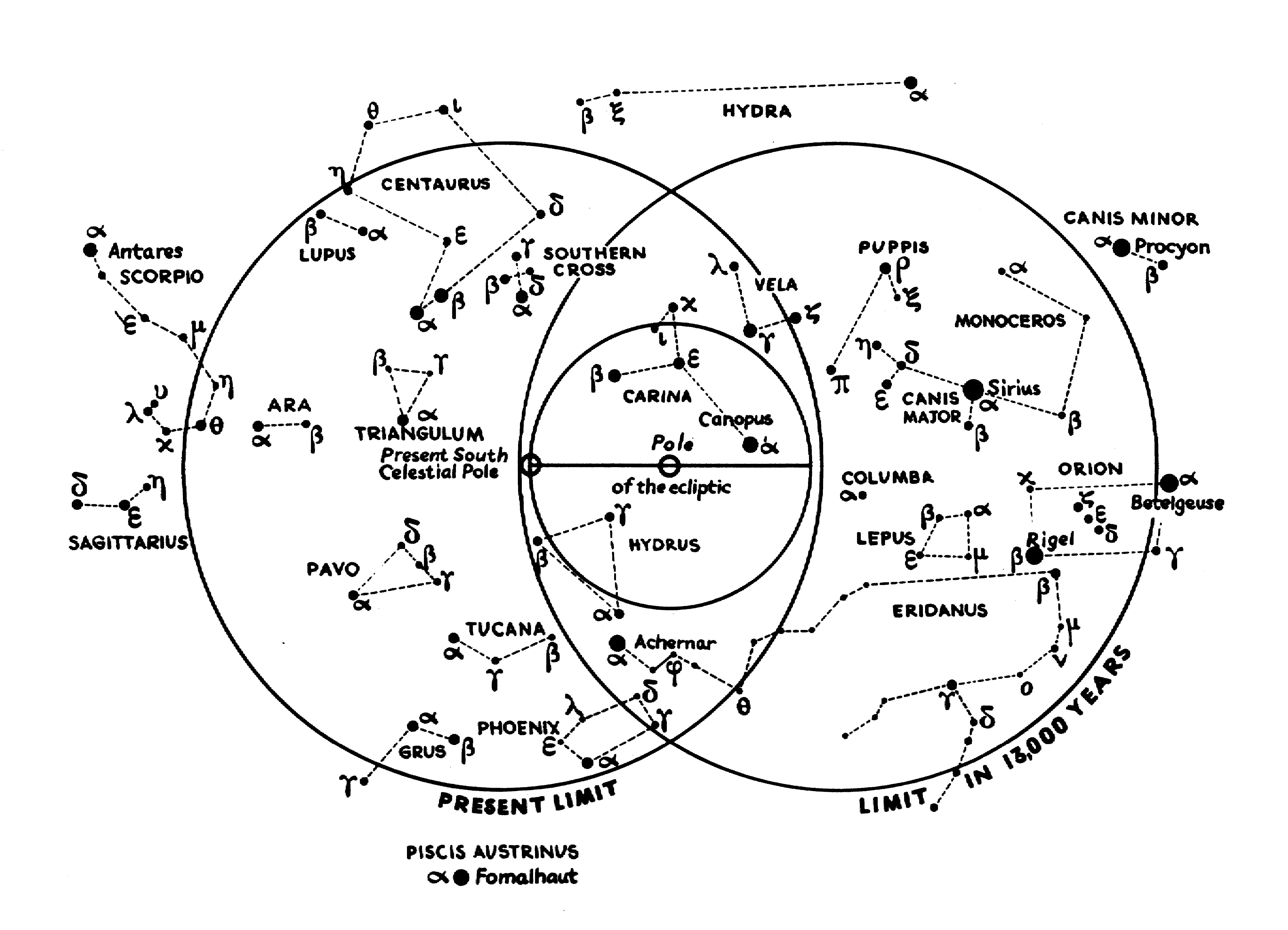We would expect the south pole to be located at the right side of the pole of the ecliptic - as we earlier saw that the north pole was at left of the ecliptic pole (and as the axle of the earth must be straight, not broken). But they (Hamlet's Mill) haven't done it that way. In the map over the north area (previous page) the pole advanced counterclockwise over time. The axle of the earth must in consequence move counterclockwise over time also in the south. But is the map below really done that way? Is the map below not a mirror image? I think it must be, because otherwise - at left - we see Scorpio arriving before Sagittarius. Diametrically opposed to Scorpio is Taurus and opposite to Sagittarius is Gemini (see previous page). As signs of vernal equinox Gemini arrives earlier than Taurus. When Gemini marks vernal equinox Sagittarius marks autumnal equinox, and when Taurus marks vernal equinox Scorpio marks autumnal equinox. And conversely, of course; not only is the axle of the earth straight, rigid and moving, but also the real zodiac (in contrast to the astrological one which never moves). On the 'new' Dendera zodiac we can see that Sagittarius is arriving before Scorpio, if we read counterclockwise. (Which we ought to do as the figures are looking towards the right - if they are not upside down.) Taurus arrives before Aries and Aries before Pisces. At a given epoch and location in the sky (e.g. zenith) constellations move westwards (clockwise) over the year, because the earth moves clockwise (seen from the north) around the sun, keeping its axle fixed. That means clockwise on the Dendera star chart. Precession of the vernal equinox, on the other hand, moves counterclockwise on the Dendera map. Therefore the north pole will also move counterclockwise in pace with the equinoxes. Was Canopus (α Carina) close to the south pole about 14,000 years ago or about 12,000 years ago? At first I cannot say for sure. If the map below is a mirror map - which I believe - then 14,000 years ago is the correct answer. If the map is not a mirror map, then 12,000 years ago will be the right answer. 'Limit in 13,000 years' means the circle defining which part of the sky will become cicumpolar at that time (and also which part of the sky was circumpolar 13,000 years ago - the cycle of precession is about 26,000 years). Strangely there are 13 fortnights in half a year and 26 in a year. Looking at the real sky (here up in the north) I see the same order as on the map on the preceeding page, i.e. how the sky looks from the inside. Looking at an ordinary sky map it is the same. But the map over the south sky has Triangulum to the right of a line between Southen Cross and Tucana, not at left as below. I.e. the map below is a mirror map, as it would look from the outside, from below the sky globe. Looking from below the sky globe the south hemisphere will be mirrored, but not the north hemisphere. On a separat page I must add one more complication, the obliquity cycle.
The arrow imagined as the three stars in the Belt of Orion are aimed at Sirius. Are Rigel and Betelgeuse then the end points of this archer's bow? Is there an arrow in Sagittarius and could that one be aimed at Canopus? |
